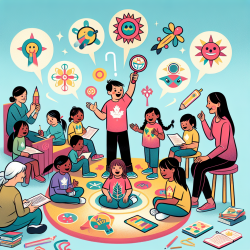As speech-language pathologists (S-LPs), our primary goal is to provide accurate and effective assessments that reflect the true communicative abilities of the children we serve. This goal becomes particularly challenging when working with culturally diverse populations, such as Aboriginal Canadian children. The research article "Assessing the Language of Aboriginal Canadian Children: Towards a More Culturally Valid Approach" by Alice Eriks-Brophy (2014) highlights the critical need for culturally valid assessment practices. This blog will explore the key findings of this research and provide practical suggestions for implementing these findings in clinical practice.
Understanding the Challenges
Traditional standardized tests often fail to capture the unique linguistic and cultural backgrounds of Aboriginal children. These tests are typically normed on majority culture populations, which can lead to biased results and misdiagnoses. Key challenges identified in the research include:
- Unrepresentative normative samples
- Situational and content bias
- Differences in dialect and language use
- Varying cultural norms and values
Implementing Culturally Valid Assessment Practices
To create more culturally valid assessments, practitioners should consider a combination of standardized and child-centered approaches. Here are some practical steps based on the research findings:
1. Combine Standardized and Child-Centered Approaches
While standardized tests provide a structured way to assess language skills, they should not be used in isolation. Combine them with child-centered approaches such as language sampling, dynamic assessment, and narrative analysis to get a holistic view of the child's abilities.
2. Adapt Existing Tests
When using standardized tests, adapt the administration and scoring procedures to better reflect the child's cultural and linguistic background. For example, give credit for dialectal variations and use culturally relevant stimulus items.
3. Develop Local Norms
Consider developing local norms for standardized tests to ensure they are more representative of the population you are assessing. This involves extensive collaboration with community members and other professionals.
4. Use Ethnographic Methods
Incorporate ethnographic methods such as family and community interviews to gather contextual information. This helps in understanding the child's communicative environment and socialization practices.
5. Involve Community Members
Engage local personnel and community members in the assessment process. Their insights can provide valuable context and help in interpreting assessment results accurately.
Encouraging Further Research
While these practices offer a starting point, further research is needed to refine and validate these approaches. Practitioners are encouraged to document their experiences and share their findings to contribute to the growing body of evidence on culturally valid assessment practices.
To read the original research paper, please follow this link: Assessing the Language of Aboriginal Canadian Children: Towards a More Culturally Valid Approach / L'évaluation du langage des enfants autochtones canadiens : vers une approche plus culturellement valide










